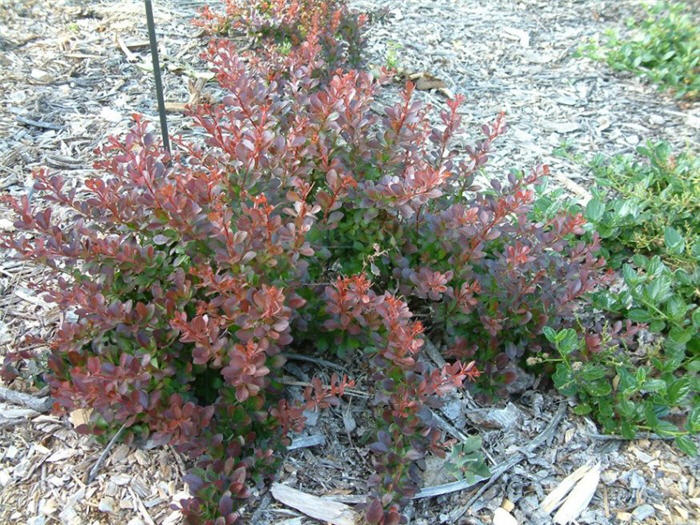| Botanical Name: Berberis thunbergii 'Crimson Pygmy' | |
| Common Name: Crimson Pygmy Japanese Barberry |

-
Anatomy
-
Culture
-
Design
Plant Type
Shrub
Height Range
1-3'
Flower Color
Yellow
Flower Season
Spring
Leaf Color
Red
Bark Color
Brown
Fruit Color
Red
Fruit Season
Winter, Fall, Persistent
Sun
Full
Water
Medium, Extra in Summer
Growth Rate
Moderate
Soil Type
Sandy, Clay, Loam, Rocky, Unparticular
Soil Condition
Average, Rich, Poor, Well-drained, Dry
Soil pH
Neutral
Adverse Factors
Thorns/Spines
Design Styles
English Cottage, Formal, Japanese, Mediterranean, Ranch, Spanish, Woodland
Accenting Features
Unusual Foliage
Seasonal Interest
Winter, Spring, Fall
Location Uses
Perennial Border, Shrub Border, Foundation
Special Uses
Hedge, Fire Resistant, Small Spaces
Attracts Wildlife
n/a
Information by: Stephanie Duer
Photographer: Tina Olsen Binegar
Photographer: Tina Olsen Binegar
-
Description
-
Notes
Crimson Pygmy Barberry is a deciduous shrub with arching branches and a dense, mounding habit. New foliage is bright red, turning to a bronzy red to deep green in summer. Autumn color is bright red. Prefers full sun and regular watering; color is less red in shade. Thorns make this shrub well suited as a barrier hedge, though it is of small enough scale to be valuable in a mixed perennial/shrub border.
Best color occurs in full sun. Benefits from regular watering. Prune in late winter to early spring either using the selective or renovating technique, but wear sturdy gloves and long sleeves to protect against the thorns. See tips for pruning information. The thorns make it unsuitable for parkstrips.